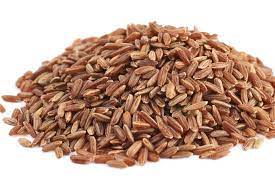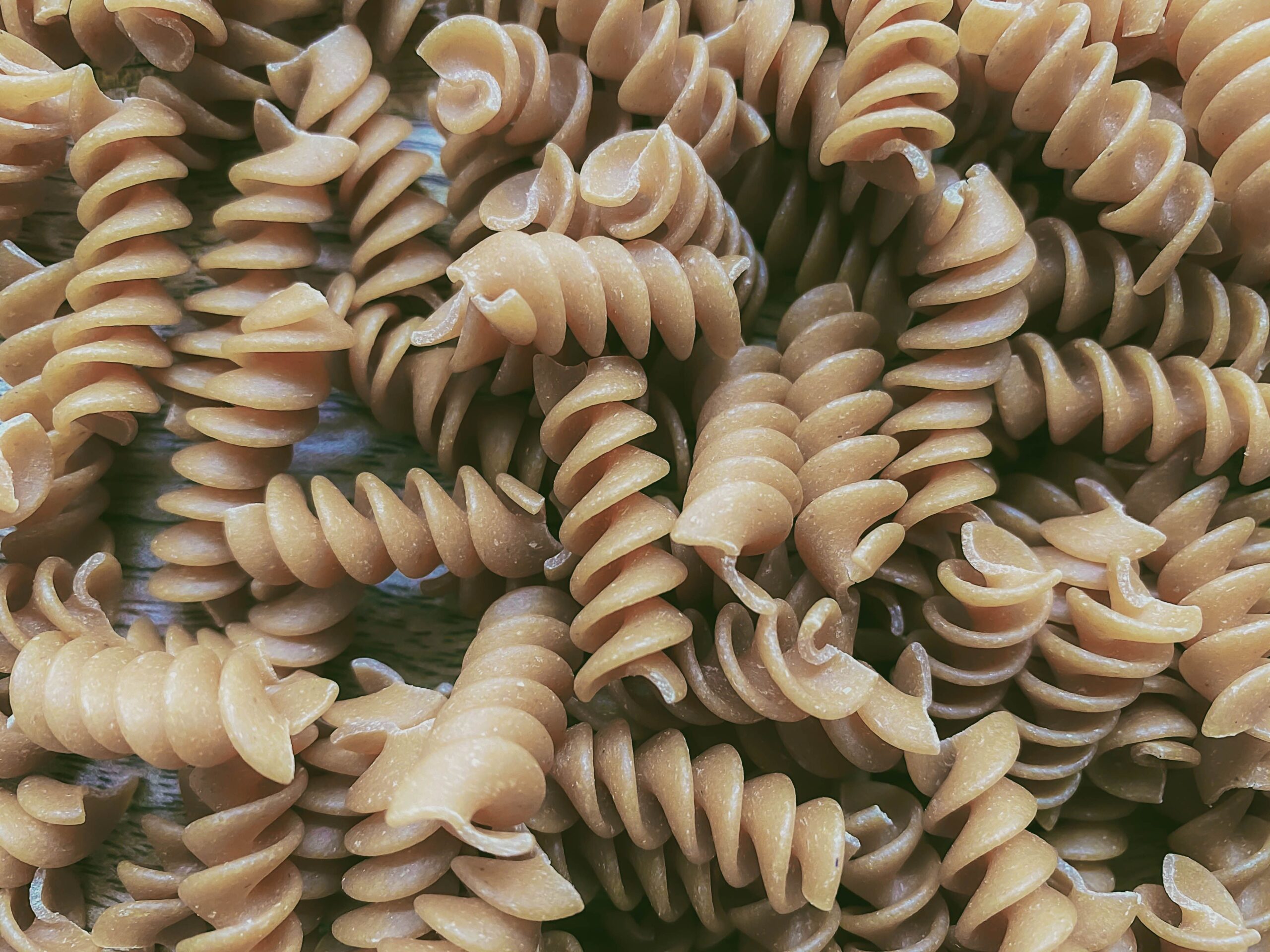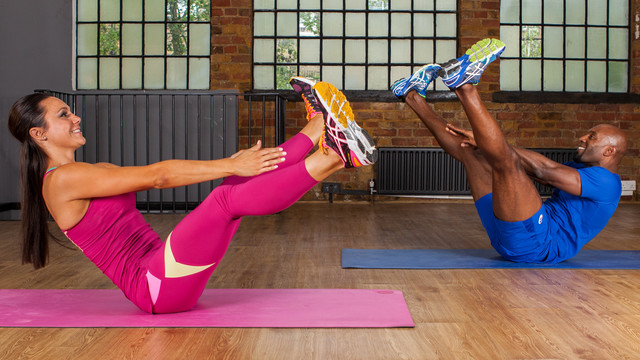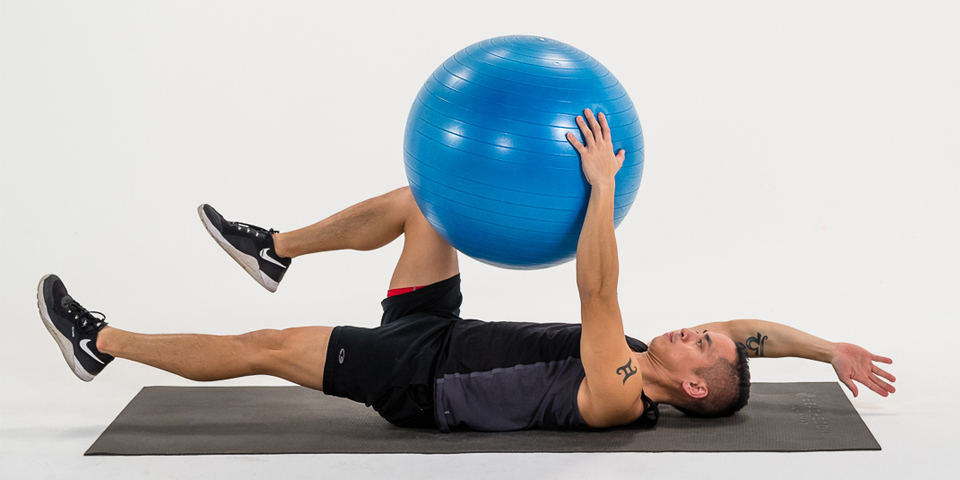A happy life is built on the foundations of your health and well-being. But how can you boost your happiness? Well, this guide is here to show you how to improve your life in order to live a healthier and less expensive lifestyle.
Good health has become increasingly popular in recent years, particularly in the last decade or so. Only forty years ago, most Americans smoked heavily, and trans fats were prevalent in many of our favorite foods.
Fortunately, we have become healthier over the last few decades and have made great strides in growing and creating better foods in general.
We smoke less, drink less, and exercise more; we have better access to health care. And advances in medical research have made it easier to live a healthy lifestyle.
With living standards rates approaching 80 percent and healthy life expectancy approaching 60 percent. We, as a people, are consciously attempting to improve our circumstances.
So, what exactly is this ground-swelling movement toward a healthier way of life? So, we’re here to explain.
What exactly is a healthier way of life?
Most people define healthy living as having a good balance of physical and mental health or being able to function normally in life. This includes a healthier diet, more and more frequent exercise, and improved mental health. Because these three are obviously intertwined.
Physical and mental health are frequently intertwined, so changes on one side (for better or worse) have a direct impact on the other.
However, many people are unhealthy because it is less expensive. Processed foods, for example, are inexpensive, while junk foods are sweeter and more readily available.
The Premium of a Healthy Lifestyle
Good health is not always inexpensive. Obesity, which is a direct result of an unhealthy diet and sedentary lifestyle, is the most common.
Obesity affected more than 100 million adults (about 40%) in the United States between 2016 and 2020, according to the CDC.
Obesity is also the most common in the lower income brackets. And, given that obesity-related chronic diseases already account for 70% of US health-care costs, the link between obesity, inactivity, and poverty may be too costly to ignore.
Furthermore, in a recent study, scientists from the Centers for Disease Control and Prevention (CDC) examined obesity data collected at the state level from 1990 to 2017 and at the county level from 2004 to 2013. The researchers then compared these obesity rates to the median household income reported by the US Census Bureau.
As shown by this survey, the relationship between household income and obesity rates has been steadily increasing since 1990, reaching a high point in 2016.
Obesity disproportionately affects the poor in the United States. Similarly, from 2004 to 2013, obesity increased by about 1% on average in the 25 richest counties in the United States. Obesity rates in the 25 poorest counties, on the other hand, have risen by more than 10% in the last decade.
Correspondingly, numerous studies have found that low-income children and adults are more likely than older children and adults to be overweight. The statistical distribution follows a straight line. Obesity rises as one’s income falls.
Why should you live a healthy lifestyle?
The first factor is that living a healthy life is a lifestyle choice rather than a diet. A diet is typically restricted to eating small amounts or specific types of foods in order to lose weight.
A healthy lifestyle, on the other hand, may result in weight loss, but the concept does not end there. The only way to truly stay healthy is to change your way of life. Similarly, you must alter your diet and begin exercising in order to improve your mental health.
A nutritious diet
The first aspect of living a healthy lifestyle is eating a nutritious and well-balanced diet.
The first step is to limit your intake of fast food, refined sugar, concentrated bread, and fatty and high-fat foods. Eating all of these bad and unhealthy foods can have serious consequences for your health. This is due to the fact that these foods are processed and not whole foods.
Natural grains are depleted of nutrients during processing. Furthermore, the addition of high fructose corn syrup and other additives to extend the shelf life of these foods essentially destroys their natural goodness.
People are unaware that eating whole foods reduces a variety of health risks. Eating unhealthy foods and following unhealthy diets puts one at risk of developing diabetes, obesity, and hypertension.
The good news is that if someone is suffering from a poor diet, a proper diet can help or reverse their condition.
A healthy diet includes a variety of foods that provide the body with the nutrients it requires to stay healthy, energetic, and feel good.
It is critical to consume three meals and three snacks per day. Another solution to this problem is to eat six small meals per day.
Some people may be unsure of how to begin selecting foods that will provide the greatest benefit and lead to a healthier diet.
Some of these are the healthiest foods, but lean protein and meat, quinoa, eggs, and plenty of water are also important.
Suggestions for nutrition
All humans require food to grow and maintain a healthy body, but the nutritional needs of infants, children (children), teenagers, young people, adults, and the elderly differ.
For example, until your baby is old enough to eat solid foods, you may need to breastfeed every four hours. They eventually evolved into a more common way for young children to eat three times a day.
However, as most parents are aware, children, teenagers, and young adults frequently snack between meals. Snacks are not usually limited to these age groups, such as adults and seniors.
Diet advice
- Consume three nutritious meals per day (breakfast, lunch, dinner). It is critical to remember that dinner is not always the most important meal of the day.
- Fruits, vegetables, whole grains, and nonfat or low-fat dairy products should make up the majority of your diet.
- Incorporate lean meat, fish, chicken, eggs, and beans (with a focus on beans and nuts) into your diet to maintain a healthy weight.
- Select foods that are low in cholesterol, saturated fat, salt, trans fat, and added sugars. Examine the label because the first item on the list contains the most concentrated amount of ingredients.
- Examine the size of the block; eat the smallest amount of food that will satisfy your hunger, and then stop.
- Healthy snacks should be modest in size and contain fruit, whole grains, or nuts to satisfy hunger while avoiding excessive weight gain.
- Fizzy drinks with a high sugar content should be avoided because they are high in calories. Weight loss drinks may not be appropriate because they can make you hungry and cause you to eat more food.
- To avoid gaining weight, avoid eating large meals before going to bed.
- Eating will not solve or aggravate a person’s anger or depression.
- Avoid giving your child sweets as a reward. This pattern has the potential to become a lifelong habit.
- Avoid eating in the summer, especially when it’s hot.
- Encourage vegetarianism, a healthy lifestyle, and weight loss. Vegetarians should consult a doctor to ensure that their diet contains adequate amounts of vitamins, minerals, and iron.
- Cooking food (at temperatures above 165 degrees Fahrenheit) kills the most dangerous bacteria and pathogens.
- Before eating raw foods (such as fruits and vegetables), use a liquid (drinkable) treating agent. Thoroughly rinse with tap water.
- Consume no raw or undercooked meat.
Suggestions for special circumstances:
- Diabetes patients should use the above tips and follow the instructions to monitor their blood glucose levels.
- Try to keep your blood sugar levels as close to normal as possible on a daily basis.
- People who work unusual hours (night shifts, college students, military personnel) should avoid light meals and instead eat breakfast, lunch, and dinner.
- Those who prepare the food should avoid using fat or frying it.
- Similarly, those who want to lose weight (body fat) should avoid all fatty and sugary foods, eat mostly vegetables, fruits, and nuts, and cut back on meat and dairy products significantly.
- Consult your doctor as soon as possible if you are unable to control your weight or food intake, or if you have diabetes and are unable to control your blood sugar.
On a budget, healthy eating
It can be difficult to eat a healthy diet on a limited budget. Many nutritious foods are so costly that some people are opting for cheap junk food.
However, many nutritious foods can be purchased at a reasonable price and easily incorporated into your diet. The foods listed below are all under $1 per ounce.
Dairy
A. Milk:

Add a splash of milk to your fruit smoothie or eat it as a traditional breakfast food, a bowl of oatmeal. A glass of calcium per day helps to keep your teeth strong and keeps you from becoming overweight.
B. Cheese:

This mild, soft cheese is high in protein and goes well with both sweet and savory dishes. Season with the creamy sauce or top with thinly sliced pineapple and berries.
C, Yogurt:

Choose a protein- and calcium-rich breakfast snack with a lot of features. Keep an eye out for flavors that are high in sugar. Greek yogurt is also delicious and high in protein and probiotics, but it costs more than the $1 limit.
-
Grain (whole)
A. Brown rice:

White rice should be used in place of brown rice in any recipe for a more exciting flavor and texture (note that the cooking time is different). This brown rice is high in fiber and may help to lower your risk of diabetes.
B. Wholaleme pasta:

The nutty flavors of wholemeal pasta, stir-fried vegetables, and fresh tomato sauce will delight you. Wholemeal pasta has a more complex flavor and is high in fiber, antioxidants, and proteins, all of which help lower the risk of heart disease.
C, Quinoa:

Quinoa is high in protein and fiber and can be used as a replacement for pasta in bowls of sweet grains and vegetable salads.
A. Bananas:

These 100-calorie snacks are high in fiber and potassium, and they are simple to prepare. Combine frozen bananas with creamy one-ingredient ice cream or slice it thinly with your favorite nut butter.
B. Watermelon:

This summer’s fruits that are good for you can be high in vitamin C. Slice it thinly and serve with a fruit salad, or mix it with water to taste.
C. Grapes:

Add thinly sliced grapes to your salad instead of sugary nuts, or freeze them for a refreshing summer treat. It’s extremely valuable: these small fruits are high in antioxidants, which can help lower cholesterol.
-
Vegetables
A. Broccoli:

Broccoli is high in folic acid and vitamin C, which can help lower the risk of certain cancers and heart disease.
B. Carrots:

The original carrot sticks are excellent for dipping in hummus or nut butter (but don’t try to mash them!). For roasting, season with other root vegetables or olive oil. It’s delicious.
C. Garlic:

Cook the minced garlic in a skillet or in the oven until it becomes sweet, then combine with the salad dressing and salsa. Garlic, in addition to providing vitamins and minerals, can help reduce the likelihood of catching a cold.
D. Next time you’re making an avocado toast recipe, sweet potatoes,
Try this healthy substitute for sliced bread. Sweet potatoes are high in vitamin A and calcium, but they have fewer carbs than white potatoes (just in case).
-
Proteins
A. Beans:

Beans are high in protein and fiber, and they make delicious and nutritious additions to homemade burritos, soups, and salads. Likewise, canned beans are a low-cost way to plan a meal.
B, Chickens, fish, and other types of meat:

Instead of fast food nuggets, opt for fresh chicken, fish, or turkey, which are high in lean, healthy, and affordable protein.
C. Eggs:

If you’re looking for protein, the eggs will settle quickly. To make the omelet, combine the vegetables and crepes.
Drinks
A. Coffee:

Making coffee at home is not only good for you, but it also saves you money. This morning’s pick-up also contains antioxidants that aid in heart health. Taking a small amount before exercise is a good idea because it will help you gain stamina (just make sure you limit your intake to about half a cup).
B. Tea:

Tea has numerous health benefits, ranging from lowering the risk of depression and stroke to lowering the risk of developing certain liver diseases. It can assist you in maintaining a healthy weight.
C, Water:

Go to the nearest water source. It is essential to our health. Water can help us replenish our water reserves, eliminate toxins, and keep us full in between meals. It is also beneficial to skin health.
Maintaining an active lifestyle and exercising to improve your health
The second factor is to be active and to remain active. The body is not only physically produced, but it also responds positively to it. Being active has a positive effect on one’s health.
- Improved overall health
- Increase your fitness level.
- Self-esteem that is high
- improved posture and balance
- Improved energy
- Enhance your mood
- Weight control and weight loss
Improve your health and fight disease
Exercising does not require you to exercise for several hours per day. A week of 4/7 days of 30-60 minutes is ideal. Even if someone is aware of the benefits of regular exercise, they may be hesitant to commit to it. There are, however, some tricks for staying active.
- Choose an activity that you enjoy because it will assist you in maintaining a healthy lifestyle.
- Go as far as you can
- Every day, stretch
- Invite your friends to participate.
- When you achieve your goal, congratulate yourself.
As you can see, staying healthy necessitates eating the right foods and staying active. There are many ways to stay healthy if you want to live a healthy life.
Why you should exercise on a regular basis for a healthy lifestyle
Exercise is an essential component of living a healthy lifestyle. People must use their bodies, and waste leads to unhealthy living conditions. Obesity, weakness, lack of stamina, and deterioration in general health can all be symptoms of an unhealthy lifestyle, which can hasten the onset of the disease.
Exercise Suggestions:
- Regular exercise can help prevent and reverse age-related muscle mass and strength loss, improve balance, flexibility, and endurance, and lower the risk of falls in older people.
- Aids in the prevention of coronary artery disease, stroke, diabetes, obesity, and high blood pressure.
Strengthens the bones, which helps to prevent osteoporosis. - Aids people with chronic arthritis in performing daily tasks such as driving, climbing stairs, and opening bottles.
- It boosts self-esteem and confidence, reduces stress and anxiety, boosts mood, and improves overall mental health.
- In addition, it aids in weight control and can result in fat loss in some people.
- It is recommended that you exercise moderately for 30 minutes (walking is sufficient) at least 3-5 days per week, but exercising for the majority of the week provides the greatest health benefits.
- The exercise can be divided into 10-minute segments.
- To avoid injury, excessive pain, and discomfort, begin slowly and work slowly. Exercise moderate to intensely for 30-60 minutes per day overtime.
- It is never too late to begin exercising. Exercise can help even frail seniors (70-90 years old) improve their fitness and balance.
- Almost any type of exercise (resistance exercises, underwater aerobics, walking, swimming, weight lifting, yoga, and a variety of others) will benefit everyone.
- Children require exercise, and playing at home is a good place to start.
- Sports for children can provide excellent opportunities for exercise, but it is important to avoid overdoing it in some sports (for example, throwing too much baseball can injure joints such as the elbows and shoulders). There is one).
- Excessive exercise during strenuous exercise can cause fatigue and pain, but if you experience pain, stop exercising until the source of the pain is identified. To continue with this exercise, the person may need to seek medical assistance and advice.
Most people can begin a moderate exercise, such as walking, without undergoing a physical examination. However, the people listed below should consult a doctor before beginning more strenuous exercise.
- Men over the age of forty or women over the age of fifty
- Individuals suffering from lung disease, heart disease, arthritis, asthma, or osteoporosis
- Those who suffer from exertion-related pain or chest tightness, or who are prone to fatigue or shortness of breath
- People suffering from diseases such as hypertension, diabetes, smoking, and high cholesterol are also at risk.
- They are more likely to develop coronary artery disease if they have a family history of early-onset heart disease and coronary artery disease.
- Individuals who are pathologically obese
Consequences of inactivity:
- A lack of exercise has been linked to heart disease and some cancers.
- Similarly, in the case of lifestyle diseases such as type 2 diabetes (mature or adult-onset, also called non-insulin-dependent diabetes mellitus).
- It can also lead to weight gain.
How to Work Out on a Budget
Fitness Videos:

There are hundreds of fitness videos available for all fitness levels and activities, ranging from yoga and belly dancing to aerobics and strength training. You can order videos online or use YouTube.
Outdoor Activities:

Aside from great shoes, outdoor activities allow you to do a variety of exercises without the use of equipment. Even in bad weather, walking and running are always good options. Remember that when it’s raining outside, the mall is a great place to go for a walk, and you can save money by shopping there.
Apps and exercises available online:

Hundreds of exercises are available on YouTube and other websites and smartphone apps. Some require a subscription, but many are available for free.
Purchase multifunctional equipment.
One option is to buy fitness equipment that can be used for multiple purposes. Some popular infotainment devices, such as abdominal machines and bread and thigh gadgets, are expensive and only work on one part of the body. To save time and money, you can try a variety of other alternatives for various activities:
Fitness ball:

Used to train the abs, support the body, and perform aerobic exercises while weight training. Most items range in price from $20 to $50, and you can sit on them while watching TV or working on your computer.
Multi-stop gyms for families:

These can be costly (starting at $500), but they allow you to exercise your entire body through a variety of exercises. Home gyms can help you save money on gym memberships.
- Steps: Steps can be used as a weightlifting or aerobic exercise table and cost around $ 99, which is less expensive than purchasing a weightlifting table and aerobic exercise equipment.
Cardio Exercise Machines:

Purchasing a treadmill or an elliptical machine may appear to be a luxury item. But, once again, there are a few things you can do to save money on your home gym membership while you can still exercise. You will benefit more from it if your entire family uses it.
Make use of free sports resources.
Assuming you know where, when, as well as how to exercise, you won’t need to spend any money. Free information, exercises, and even videos are available from a variety of sources. Here are some possibilities:
- Libraries: Many libraries have a wealth of information on sports, healthy eating, and fitness, including videos and books.
- Internet: The Internet can be a valuable resource for free information and exercises.
- Community Center: Look for a community center in your area because they are usually free or less expensive than traditional gym memberships. They include everything from aerobic exercise to strength training and are appropriate for people of all fitness levels.
- Weight Training: Did you know you can do weight training with your own body? Similarly, extra weights aren’t always necessary for an effective workout.
- Walking and Running: Walking and running are the cheapest forms of exercise and require very little investment.
- Running Clubs: There are some free running clubs in your area. Even if you pay an annual fee, you can stay motivated by taking advantage of discounts at sporting goods stores, saving money, and receiving freebies such as training programs and groups.
- Friends and Neighbors: Asking your friends and neighbors to share bikes, sports videos, and other equipment is another option to consider. My neighbors occasionally ask me to ride their bikes with them, and it’s a great way for us to bond. And we both have the option of exercising without spending any money.
Mental Health for a Better Way of Life
A healthy lifestyle includes not only physical but also emotional and mental well-being. People can help their mental health and well-being by doing the following.
Suggestions for Mental Health
- First and foremost, ensure that you get enough sleep every day. The CDC suggests different sleep schedules for different age groups. However, if you are 18 or older, you should get at least 7-9 hours of sleep. And older people need 7-9 hours of sleep, but if they can’t sleep well and wake up late or early, a nap may be necessary to get a total of 7-9 hours.
- Take a walk at least twice a week and reflect on what you’ve seen and heard.
- Try new things on a regular basis (eat new food, work differently, and go to new museum exhibitions).
- Perform some mental exercises (reading during the week and sometimes confused).
- Concentrate on this process for an hour to a few hours, then take a break and relax (walking, exercising, nap).
- Plan to spend time talking with others about a variety of topics.
- Make an effort to set aside some time each week to do things that interest you (hobbies, sports).
- Learn to say “no” when something occurs that you do not want to do or participate in.
- Enjoy yourself (travel with loved ones, go shopping, fishing, and don’t forget about the holidays).
- It should meet your expectations, no matter how big or small they are (improve satisfaction).
- I have a large circle of friends. People who have strong social support systems live longer and healthier lives.
- Seek help and advice as soon as possible if you are frustrated, considering suicide, or believe you are causing harm to yourself or others.
- People taking psychiatric medications should not stop taking them until they have discussed the situation with their prescriber, regardless of how “good” they “feel.”
- Another important aspect of staying healthy is to avoid the behavior. Here are some of the main things to avoid if you want to live a healthy lifestyle.
How to Prioritize Your Mental Health on a Budget
Reach Out and Seek Assistance.
First and foremost, it is critical to understand that you are not alone. Every year, approximately sixteen million American adults suffer from severe depression.
We tend to keep these issues quiet, but we guarantee that everyone else in your life has gone through the same thing you have. Who can you rely on? Who do you believe is at ease?
When I was depressed, I began to open the tunnel, and when I heard about other people’s recoveries, I realized I had seen the light at the end of the tunnel.
You can contact someone else if you don’t want to talk to someone who is depressed or has suicidal thoughts. Dial 1-800-273-8255 to reach the National Suicide Prevention Lifeline.
-
Participate in a support group.
There are numerous support groups available. There’s one in every problem you can think of. There are also face-to-face options, as well as online opportunities when necessary.
As I previously stated, you are not alone! To be honest, knowing you’re not alone is a miracle. You are not bad; you are not out of the ordinary.
Many people are struggling to do the same for you, and being a part of a supportive community can help.
-
Make use of the free treatment/support apps.
Technology has the potential to be exceptional. Many apps provide easy access to mental health professionals. This is a wise decision because finding a good therapist can be difficult and time-consuming.
Code Blue is a network-enabled application that alerts you when it is required. This app, created specifically for teenagers, provides real-time insights into what happens when your family and friends are bullied, depressed, or commit suicide.
The Department of Veterans Affairs created PTSD Coach to help veterans cope with the symptoms of PTSD. This app is also available to the general public and provides access to resources and assistance in your area.
Talk Space is a physiotherapy app that can put you in touch with a licensed therapist. This is accomplished through the use of a video or chat function. Video therapy is an extra cost.
-
Check to see if your insurance covers mental health.
In the United States, mental health insurance is woefully inadequate. Many of us are not receiving the assistance or care we require and deserve.
Many insurance plans, however, cover specific types of mental health treatments. My insurance, for example, covers network therapists.
You will be charged $30 for each visit, which is less than the $150 fee charged by the therapist without insurance.
As a result, if you have health insurance, contact your doctor for more information on your coverage. What options do you have in your plan? Is the entire course of treatment covered? Have you taken any medication? This will have a significant impact on your mental health.
-
Investing in one’s own mental health
When it comes to managing your mental and spiritual wealth, a small investment can yield huge returns.
Finding the spiritual energy to care for one’s mental health can be challenging. Fighting depression, for example, is difficult, but the effect is minimal.
Several activities can contribute to the replenishment of your mental health portfolio. All of these are completely free and do not necessitate the use of any special equipment or software.
-
Keep a Journal
Journals have numerous scientific benefits, including a reduction in stress-related medical consultations, an improvement in mood, an improvement in mental health, a reduction in depressive symptoms, and a reduction in post-traumatic symptoms.
It can be used to alleviate anxiety or to cope with traumatic events. The diary is a personal account. It is about creating your own space where you can explore your thoughts and feelings without fear of being judged. It does not have to be overly long. To get started, no structure or special application is required.
-
Exercise
Exercise is powerful medicine. Numerous human studies have shown that continuous aerobic exercise is beneficial. Anything more than 30 minutes per day can have both physical and neurobiological benefits.
Similarly, these studies show that exercise can improve self-esteem and reduce depression.
Whenever you are stressed, anxious, or depressed, try to take a short break to clear your mind. It may be difficult to go out in running shoes, but it will make you feel better.
-
It is being discussed
Talk to your friends or coworkers if they are nearby. Find someone who is good at listening if possible. Talking about it is not the same as seeking advice. Instead, encourage everyone to share their experiences.
I didn’t include meditation on my list because it’s unlikely that I’d develop a meditation habit while suffering from a mental illness. These simple activities will assist you in restoring your basic mental health condition. This enables you to pursue more complex activities to further improve your mental health.
Fundamental lifestyle changes that can lead to a healthier way of life
Attempt to Avoid Financial Concerns
Many adults’ mental health is linked to financial anxiety, and roughly half of debt problems (those who believe payments of bills, mortgages, rents, credit cards, and so on are seriously late) are among the leading causes of mental health problems.
In general, financial hardship can significantly reduce the rate of recovery from general mental health problems.
Similarly, you must take concrete steps to improve your financial situation in order to improve your overall health. Getting a better job, changing careers, starting a business, or even a side hustle are all examples of this. More money typically equates to fewer worries and greater happiness.
-
Get a good night’s rest.
Chickens and eggs are associated with better health and sleep. Similarly, research has found a link between sleep disorders and insomnia as symptoms of mental illness and overall health.
Similarly, these studies have shown that sleep disorders can cause mental illnesses.
It’s a vicious cycle that will have an impact on other aspects of your life, such as diet and exercise.
How do the recent damaging events (use of social media, discrimination at work and in daily life, street noise, financial worries) prevent someone from getting a good night’s sleep? Sleep for a long time. Sleep deprivation can have a negative impact on your overall health over time.
So, for better health, make sure you get enough sleep.
-
Avoid Excessive Alcohol Consumption.
The consumption of alcoholic beverages is associated with poor health. Similarly, regular drinking can interfere with chemicals in the brain that is necessary for mental health maintenance.
- Similarly, in the United States, long-term excessive drinking is the leading cause of liver cirrhosis.
- Cirrhosis can cause internal bleeding, ascites retention, bleeding and bruising, muscle wasting, confusion, infections, and, if not treated promptly, coma and kidney failure.
- Alcohol is responsible for 40 to 50 percent of traffic fatalities in the United States.
- Alcohol consumption is a leading cause of domestic accidents, drownings, burns, and deaths.
- Alcoholism can be treated in a variety of ways. However, admitting that one has a problem and, hopefully, overcoming alcoholism is an important first step in recovery.
Alcoholics Anonymous’s 12-step self-help program can be an effective treatment method.
Psychologists and other mental health professionals have created programs to help people cope with emotional stress and avoid behaviors that can lead to binge drinking.
Family support and understanding are frequently required for long-term recovery. Medicines can aid in the prevention of relapse and withdrawal symptoms following acute or long-term poisoning.
Get rid of bad eating habits.
You intended to go to bed at 10 p.m., but the ice cream in the fridge is calling your name once more. You know it’s bad for you, but no matter how hard you try, you can’t end the night without a large bowl of cereal (and, for that matter, any night).
Bad eating habits also deplete your health and well-being more quickly. There is currently a lot of evidence that diet is important for both mental and physical health.
A healthy diet can be protective, whereas an unhealthy diet can be detrimental. So, try the following tips to break these bad eating habits.
- The first step toward overcoming an unhealthy diet is recognizing bad habits and comprehending why they exist.
- It is critical to incorporate small, manageable changes to your diet and lifestyle gradually if you are to successfully overcome poor nutrition.
- Relax if you’re not used to forming bad habits. According to psychologists, slacking does not ruin your diet.
In conclusion
Mental decline is a natural part of the process of developing healthier habits. So, as you begin to form a new habit, pay attention to the positive changes you notice and set realistic goals. If you want to succeed, the changes should be gradual. Otherwise, drastic changes will be short-lived.
Finally, when you begin making these changes, you should begin by incorporating healthier alternatives into your life rather than reducing unhealthy behaviors. When you break bad habits, you may feel cheated.
However, making healthier changes will give you a sense of accomplishment. Then you can gradually get rid of the bad stuff and improve your health. And it won’t set you back an arm and a leg.
Do you find Six9ja useful? Click here to give us five stars rating!












Nnadi chisom
3 years ago
Its so lovely
Abel Saili
3 years ago
I want to subscribe so that i learn more from you